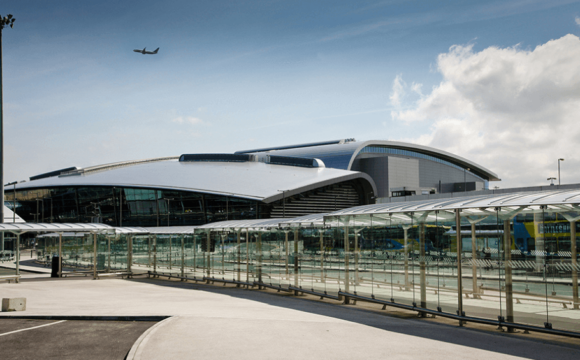“IT’S just like being in France,” my wife Jenny remarked as we wandered around this small historic city’s crowded and colourful market square in the towering shadow of a magnificent Gothic cathedral.
No we were not in Tours or Rouen, but on a winter minibreak to picturesque Wells on the edge of the rolling Mendip Hills in mid Somerset.
And our ideally placed base for two nights was the nearby Swan Hotel, which has been welcoming guests for some six hundred years.
Back in the bustling Wednesday market, our noses led us to a stall displaying freshly baked filo pastry pies with a mouth-watering selection of fillings which left us feeling frustrated that we could not buy a dozen to take home and pop in the freezer.
Marked out on the pavement in one corner of the square was the amazing twenty- two foot, two and a quarter-inches jumped by local athlete Mary Bignal Rand to take the gold medal at the 1964 Olympic Games in Tokyo.
She was the first British female to win a gold medal in track and field and the only British woman to win three medals in a single games.
Her amazing success will likely be remembered by older readers because it caused such a sensation at the time.
Now a stone archway close by, led us straight through to the green in front of the magnificent cathedral where building work began back in 1175.
It was Bishop Reginald de Bohon who brought the ideal of revolutionary architecture from France, so Wells became the first English cathedral to be built entirely in the new Gothic style.
Here beautiful inverted scissor arches support the central tower, but the first building phase took over sixty years to complete for the simple reason that it was only warm enough for the lime mortar to set between April and October, a blue sashed guide told us.
Today, a crowd gathering feature of Wells Cathedral, and dating back to 1392, is the oldest twenty-four clock in the world to have a face with a large golden sun pointer against a backdrop of stars.
In keeping with the medieval view of the world, the sun progresses around the earth against a backdrop of stars.
We had booked a late lunch in Roots, a modern veg-led plate sharing restaurant opened by Michelin starred Master Chef finalist Josh Eggleton, who grew up in the nearby Chew Valley.
The food was delicious so anyone following in our footsteps should book early to avoid disappointment.
It was refreshing to browse around a High Street with a good selection of independent shops before returning to The Swan in the aptly medievally named Sadler Street.
After breakfast the following morning, we made the twenty-minute drive through mostly country lanes to the small and picturesque market town of Bruton, set amid rolling Somerset hills and now well known for its eclectic mix of antique and other independent shops.
Built mainly above the meandering River Brue, this small town with tightly knit streets is overlooked by a 16 th Century watch tower sitting atop a nearby hill.
The town’s old and galleried Congregational Church with its impressive floor to ceiling windows and dating back to 1806 is now an eatery with its own wood-fired pizza oven and coffee shop, so we could not resist stopping for a warming Cappuccino and a freshly baked croissant for dunking.
Bruton is a great place to visit while staying in Wells, the only down side being a lack of parking.
Now we were back on the road again for another short cross country drive to Street and a browse around its famous designer outlet village.
A cold and overcast February day was not really conducive to our favourite pastime of country walking, so a little retail therapy was now in order we decided.
It was back in 1825 that Clarks of Street first began making slippers from the off cuts of sheepskin rugs.
Then in 1993 the country’s first designer outlet village was opened in the grounds of their old factory and a new era in UK retail had begun.
From Street it was an even shorter drive into another historic market town whose name, Glastonbury, is synonymous with a world-wide phenomenon, namely its pop festival.
It was back in 1970 that local farmer Michael Evis decided to organise his own, pop, folk and blues festival having been inspired by an open- air event he’d attended.
His farm site at Pilton is clearly visible from the top of a conical hill with a stone tower which gives Glastonbury its other far older claim to fame, namely its magnificent tor and nearby ruined abbey which fell victim to Henry V111’s dissolution of the monasteries back in 1539.
While according to local folk lore, Joseph of Arimathea established a church there in ancient times, Glastonbury can also have the feel of a spiritual place where Christian, Pagan and New Age beliefs are shared.
Just walking down its busy High Street with shops selling crystals and scented candles one can sense a feeling of other worldliness.
After dining and spending another comfortable night at, The Swan, it was time to head back home to Wales, but not before we had crossed the road for a finale visit to the historic Bishop’s Palace set in fourteen acres of fabulous gardens.
Here are the spring water wells which are carried in subterranean streams from the east Mendips to give the town its name, fill the palace moat and feature in its gardens.
While all the snowdrops and shrubs, poised to burst into bud, made the gardens a delight, even on that cold February morning, we knew we’d simply have to return in June to feast our eyes on all in bloom.
















